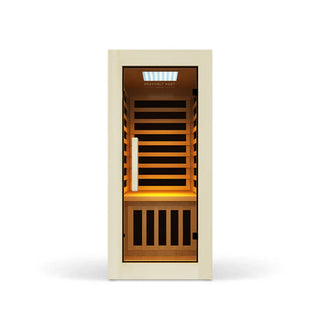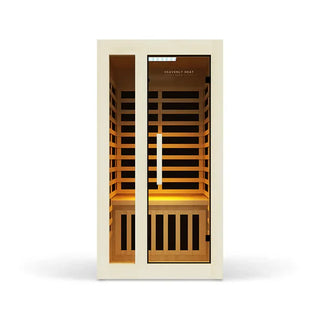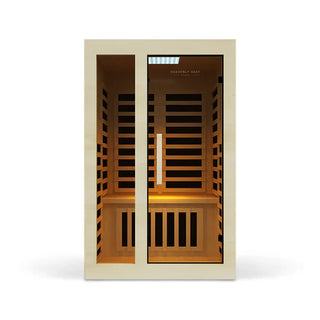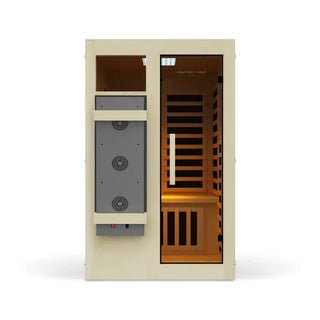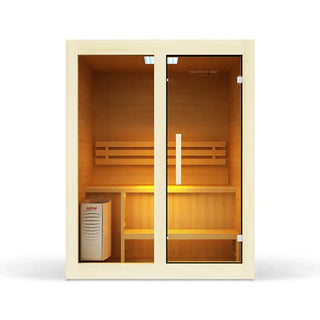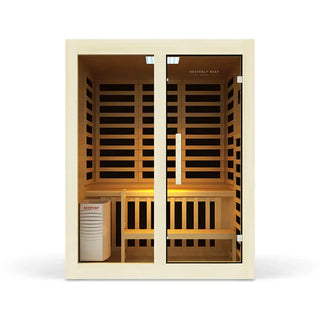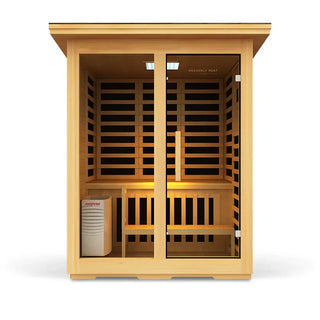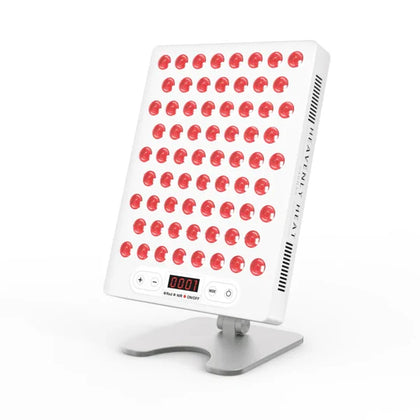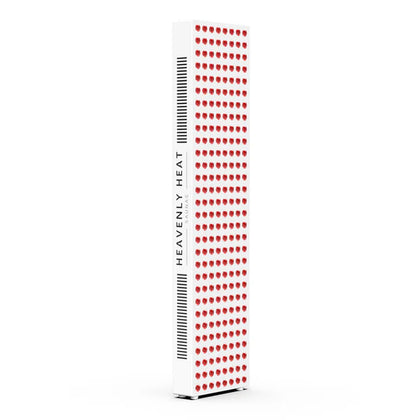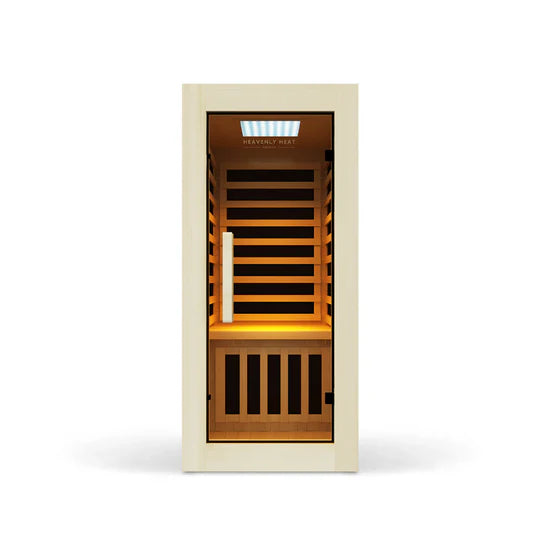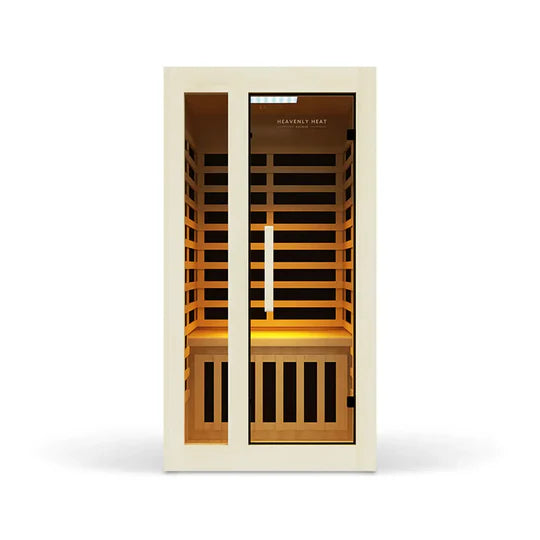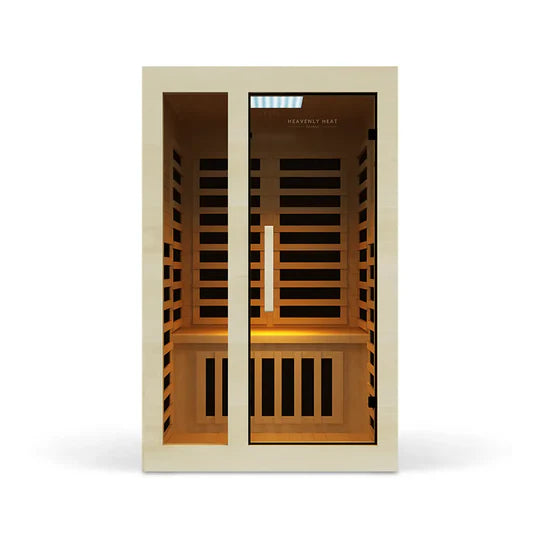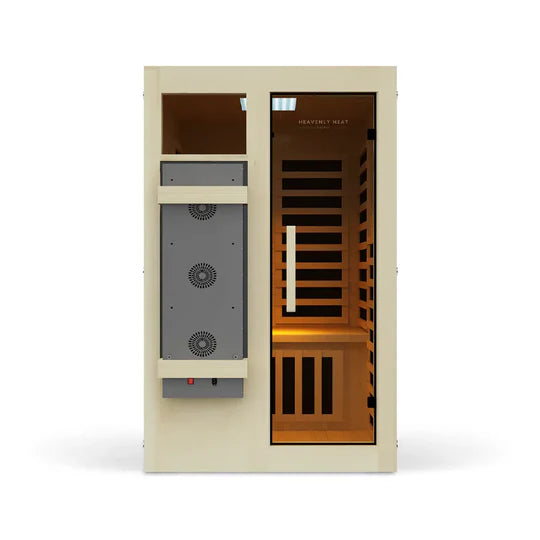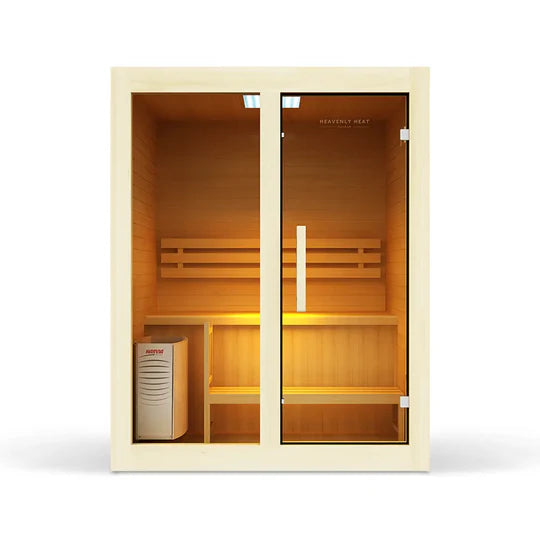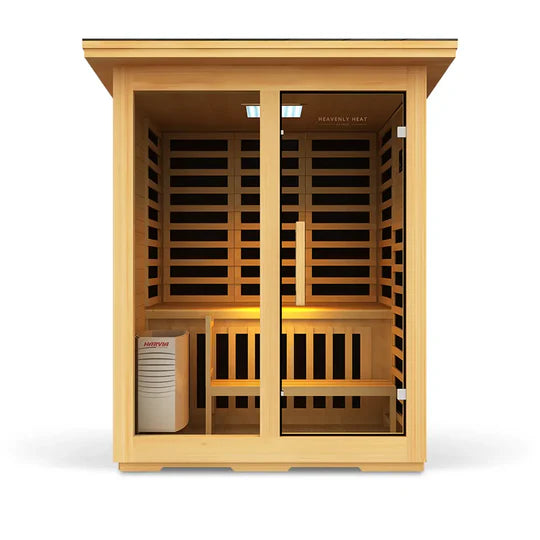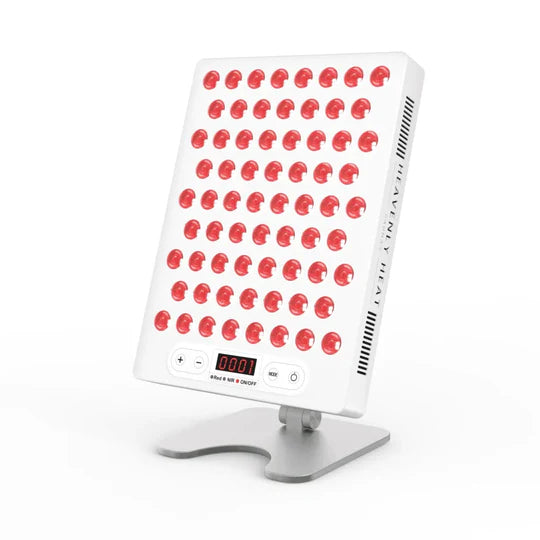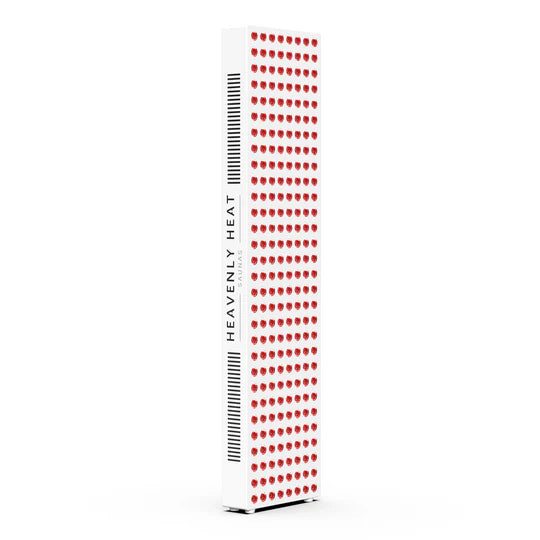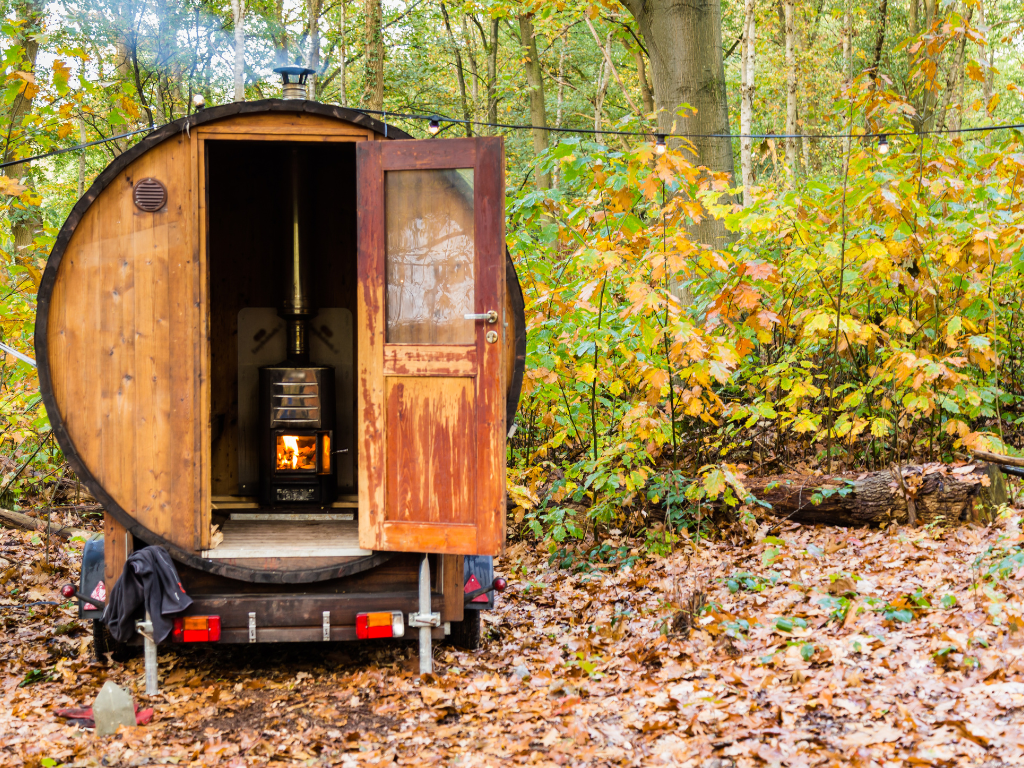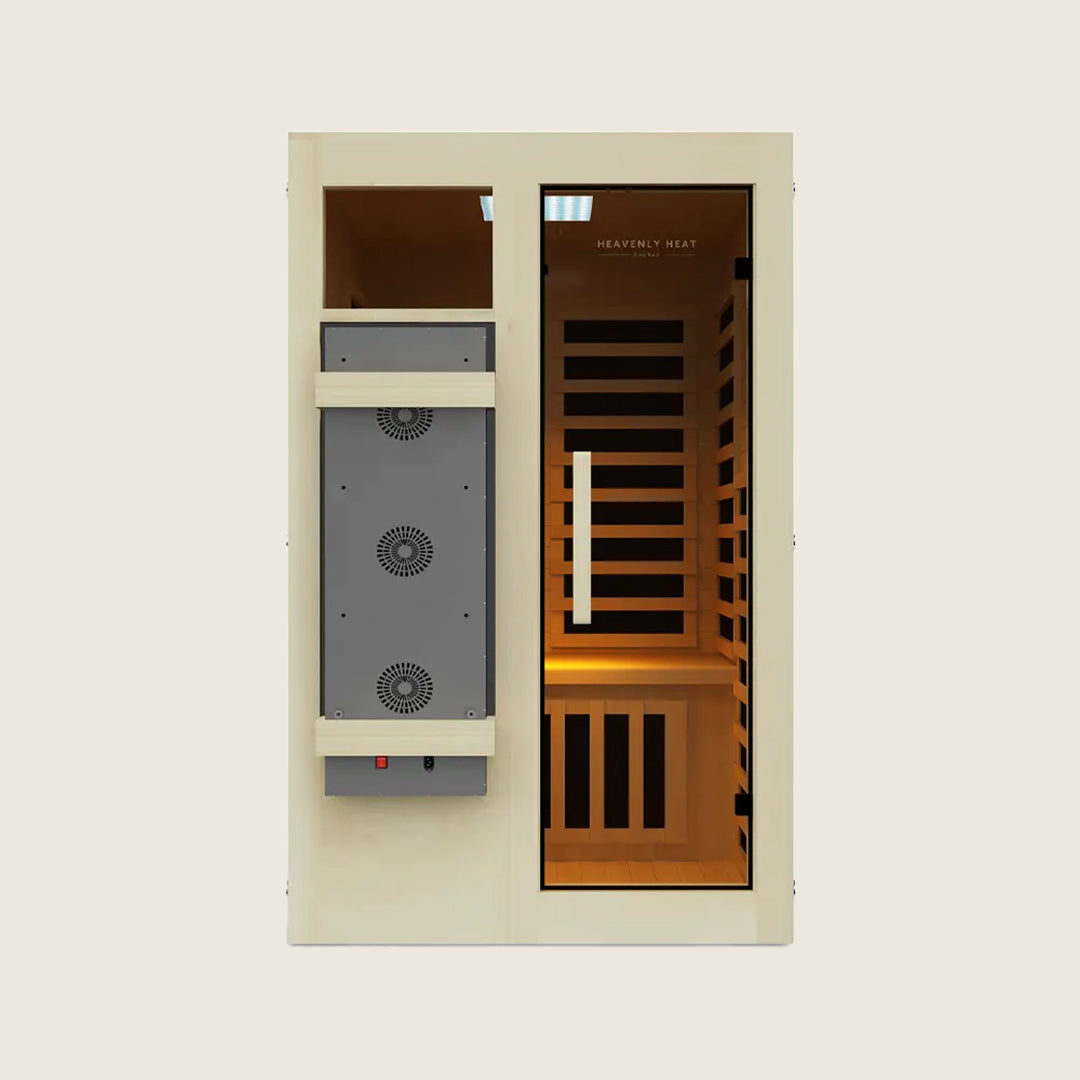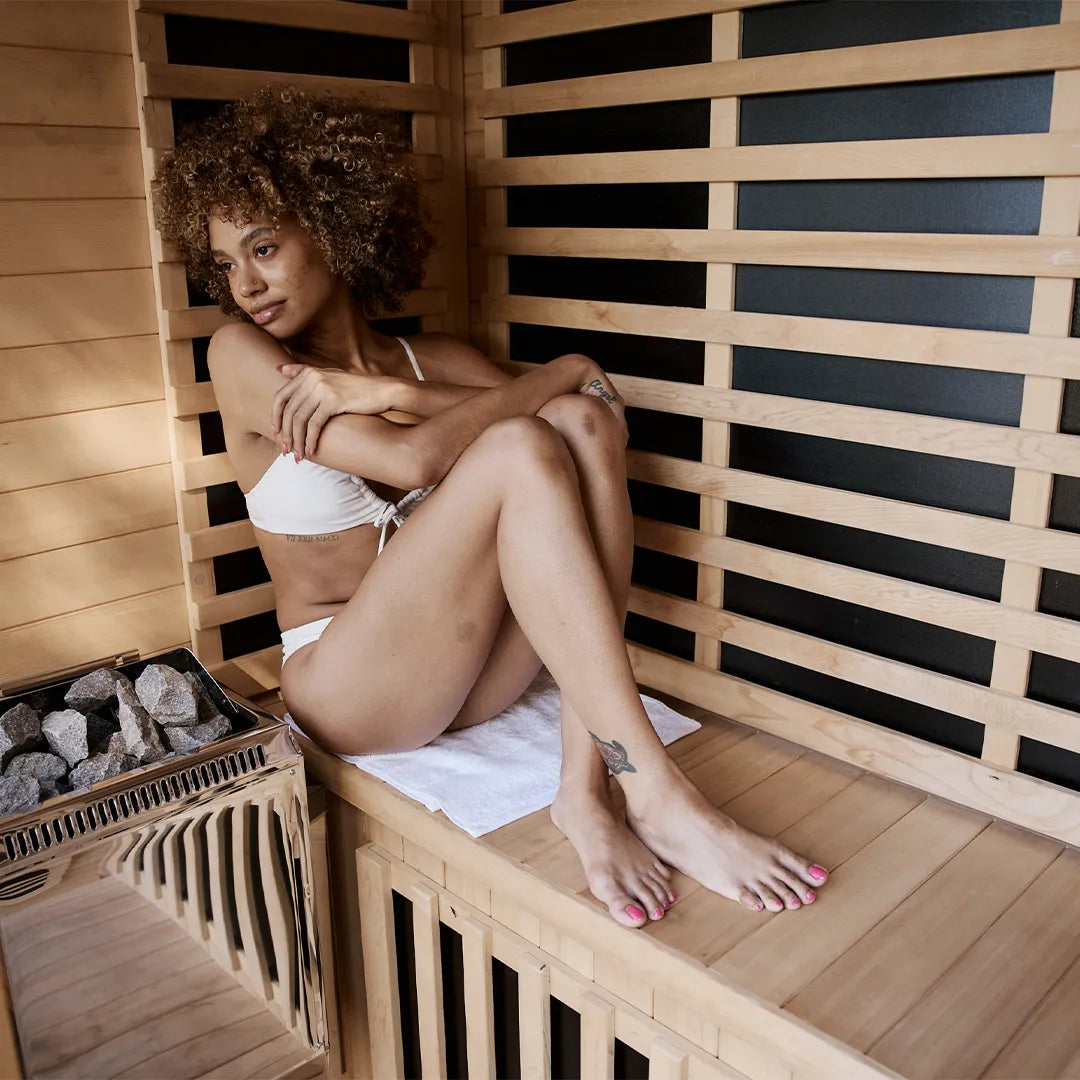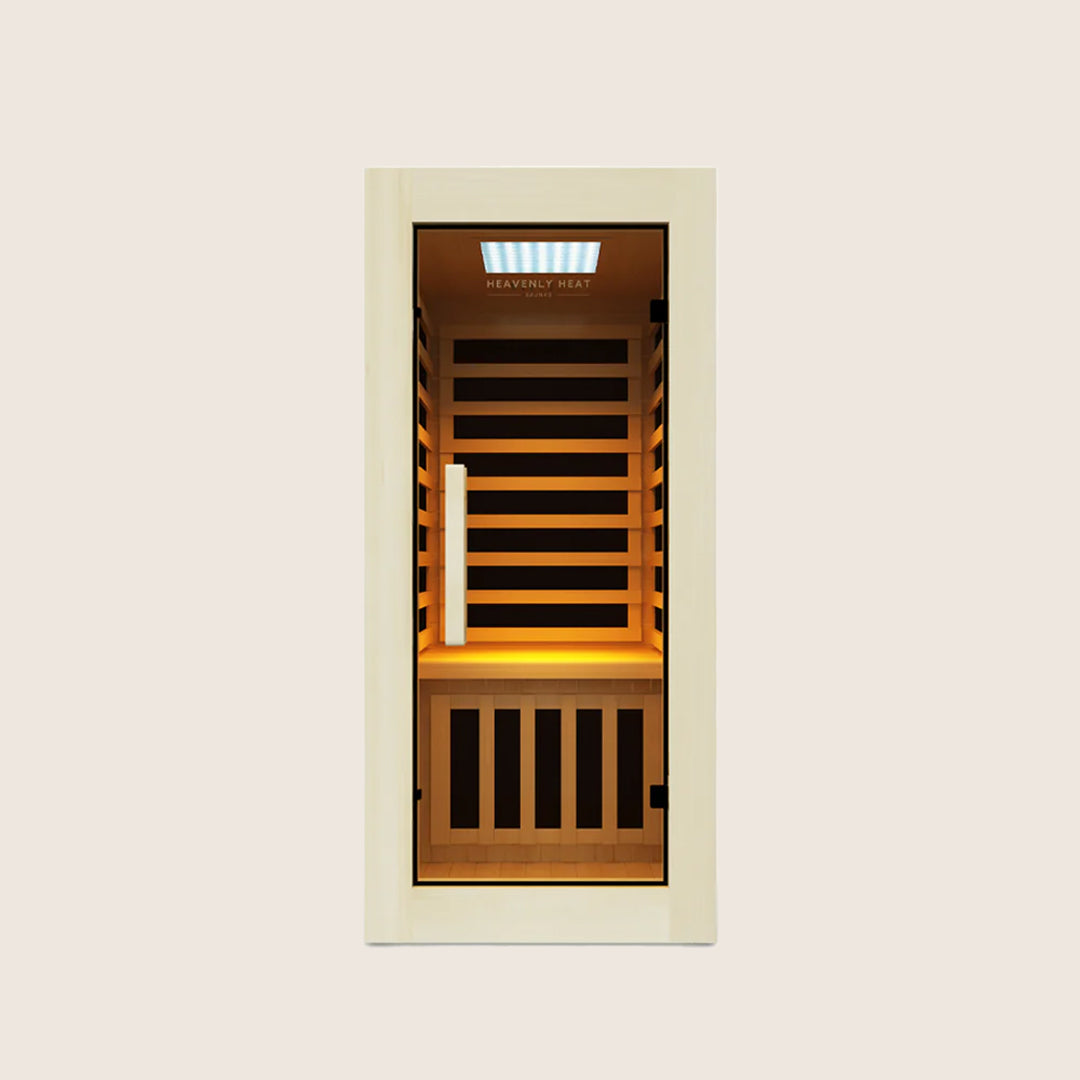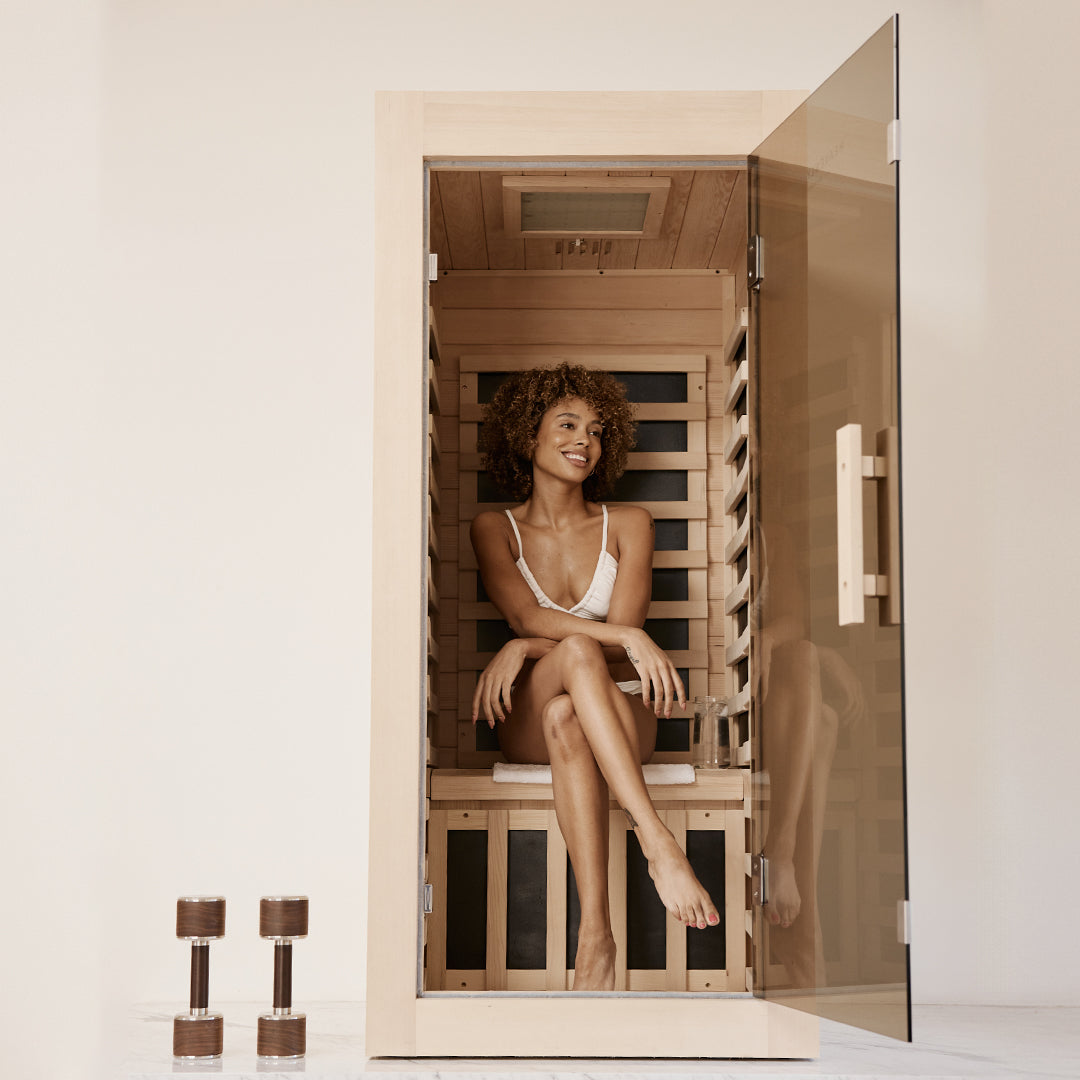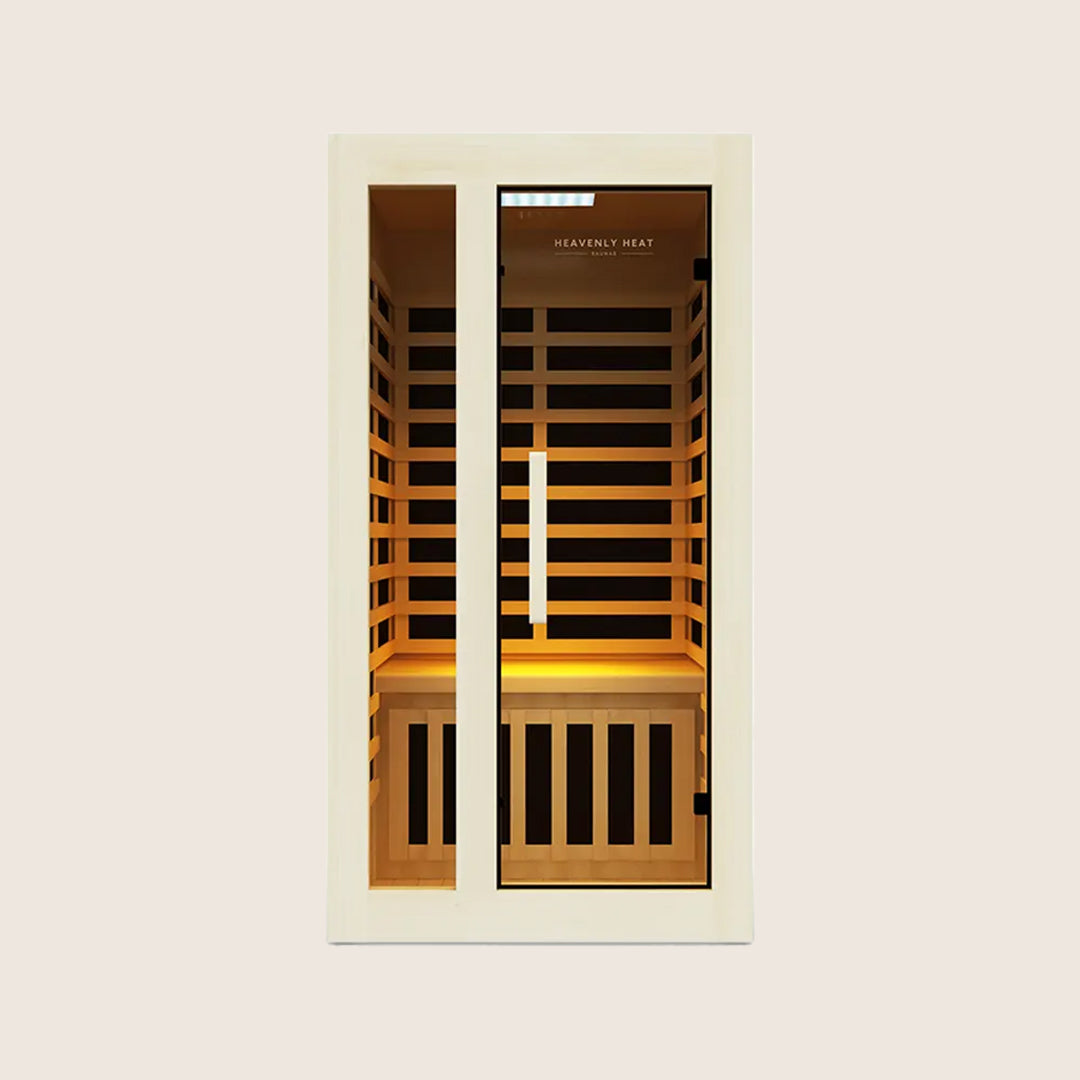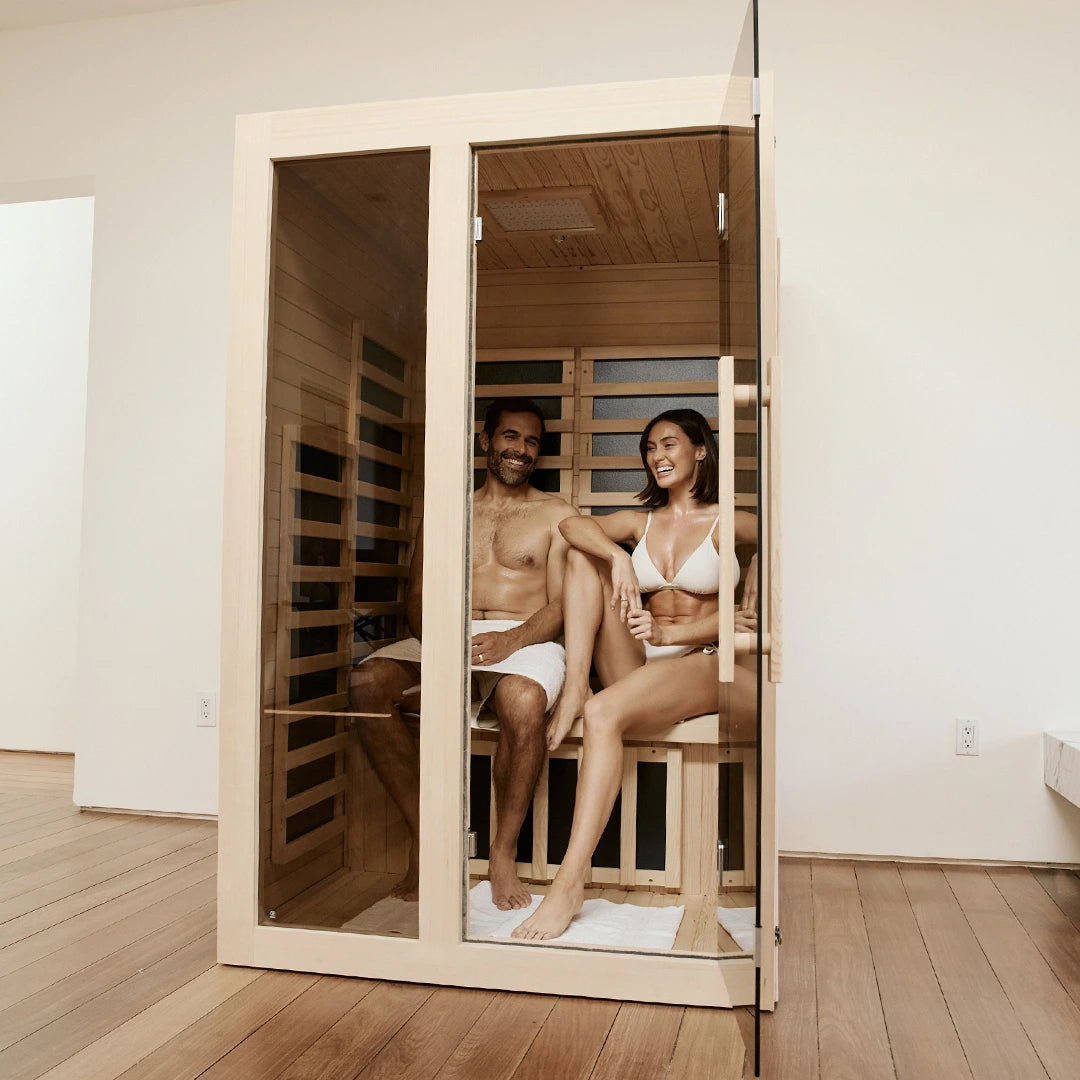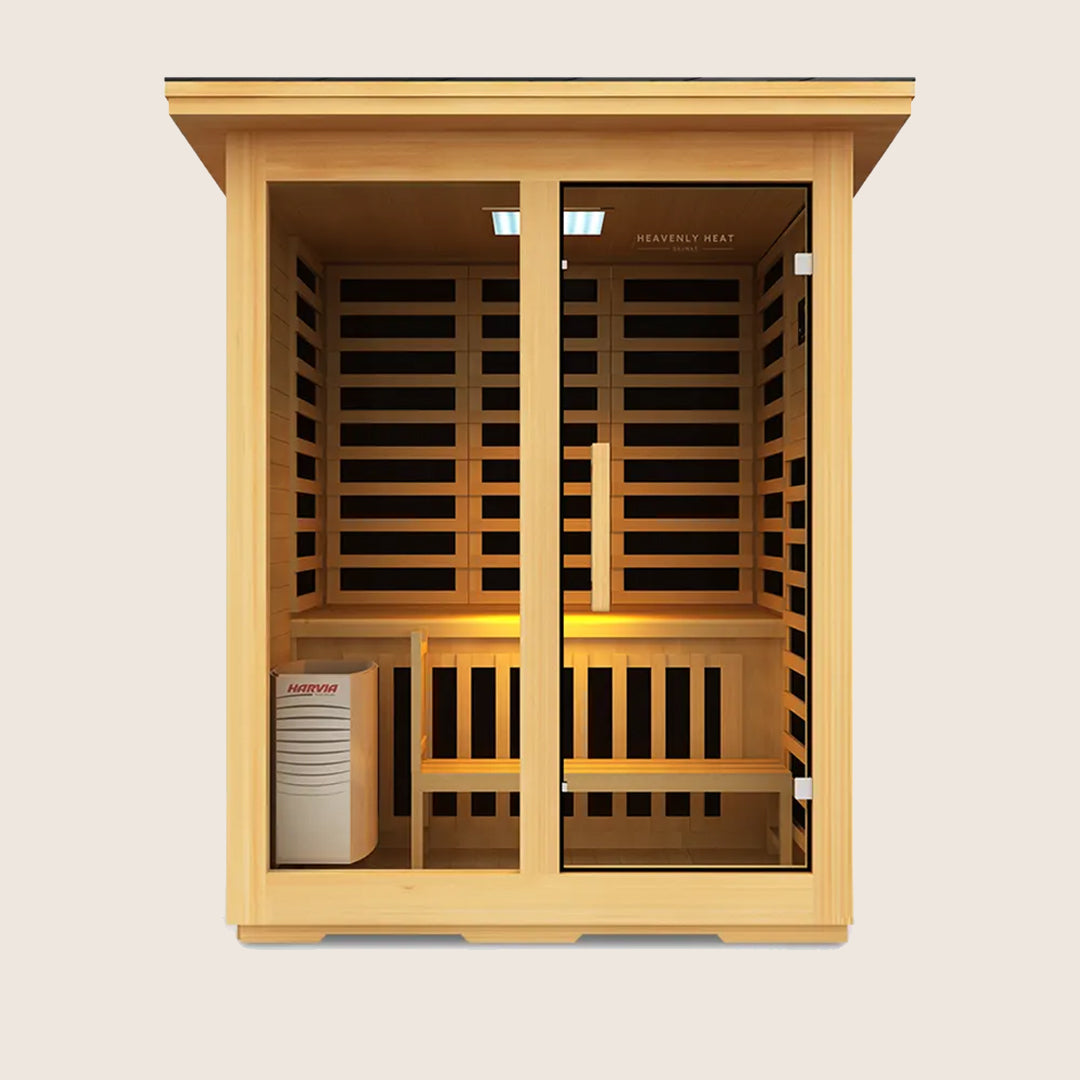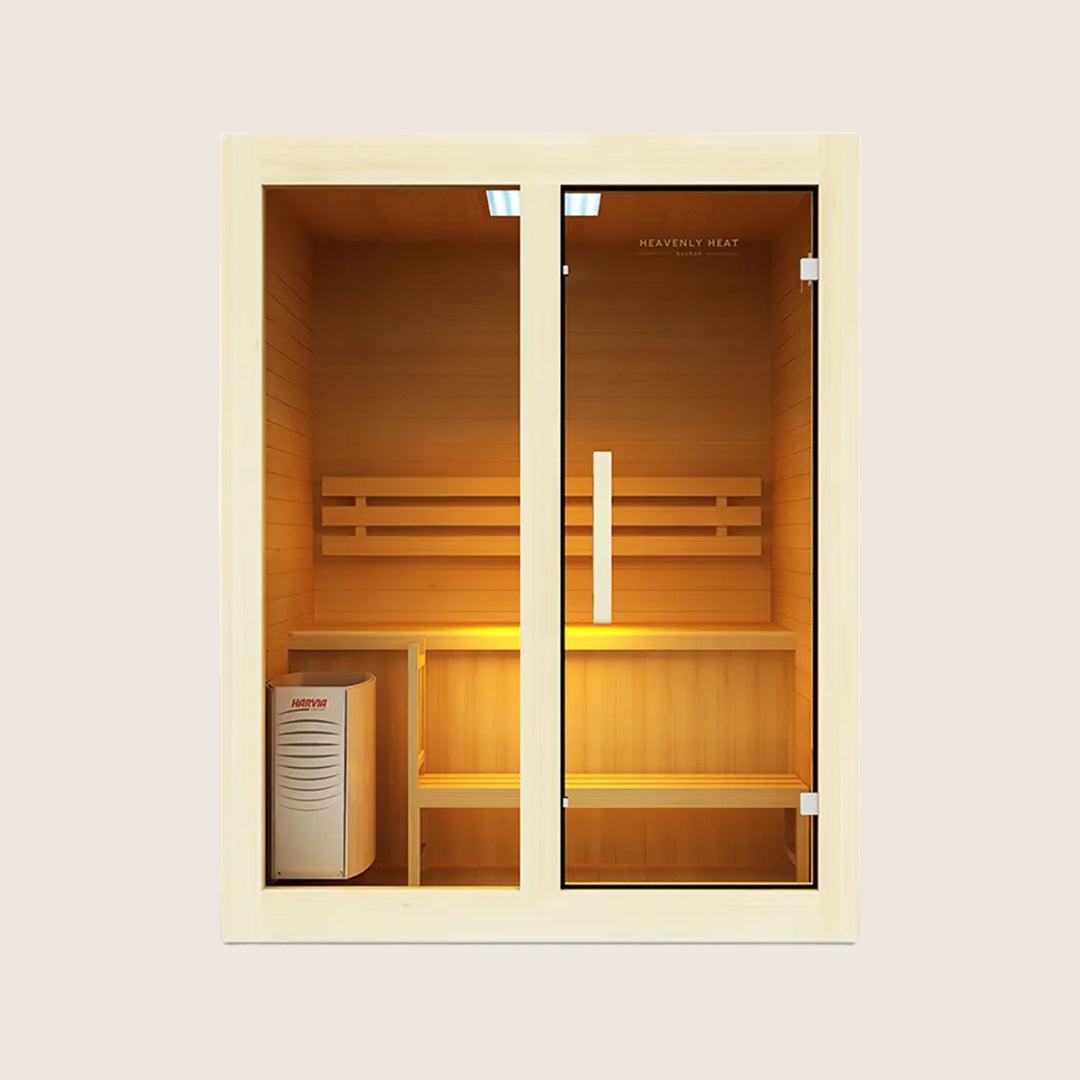How Much Does a Sauna Cost? (2024 Guide)

Saunas are a popular addition to many homes, offering relaxation and therapeutic benefits. But before investing in a sauna, it’s important to understand the costs involved. In this article, we will explore the various factors that contribute to the cost of a sauna, as well as provide tips on how to save money.
Average Sauna Cost
When it comes to saunas, the cost can vary significantly depending on several factors. These include the wood type, size, and sauna type. Let’s take a closer look at each of these factors:

Cost by wood type:
- Using cedar wood will make your sauna cost more: Cedar is the priciest wood used in sauna building. It lasts long, resists rot, and gives off a pleasant smell. Its natural red color also makes the sauna look more premium.
- Hemlock gives good quality without the high price: Hemlock is a solid choice if you want something close to cedar but at a lower cost. It’s durable and has a smooth, light appearance that makes the sauna look clean and modern.
- Pine keeps the cost low but needs more care later: Pine is the most affordable wood option for a sauna. While it helps cut costs, it may need extra maintenance over time. Still, when treated well, it gives off a warm and cozy feel.
- Your wood choice changes how the sauna looks and what it costs: Whether you choose cedar, hemlock, or pine, the wood affects not just how much you spend but also how your sauna looks and feels, from luxury to rustic charm.

| Sauna Material | Starting Price Range |
| Cedar | $1,500 – $7,000 |
| Hemlock | $1,200 – $5,000 |
| Pine | $800 – $3,500 |
| Redwood | $2,000 – $8,000 |
| Basswood | $1,000 – $4,500 |
Cost by Size
- A bigger sauna will naturally cost you more: Larger saunas use more wood, parts, and labor, so the overall cost goes up as the size increases. If you want more room, be ready to spend more.

- The right size depends on how many people will use it: If you want to relax with family or friends, a bigger sauna makes sense. But if it’s just for you, a small one can save space and money.
- Small saunas fit better in tight places: Limited space? Smaller saunas work well indoors or in small backyards, making them a good option for compact homes.
| Sauna Size | Dimensions (Square Feet) | Starting Price Range | Seating Capacity |
| Small | 4’x4′ to 5’x7′ | $500 – $2,500 | 1-2 people |
| Medium | 5’x7′ to 6’x8′ | $2,500 – $5,000 | 3-4 people |
| Large | 6’x8′ and above | $5,000 and above | 5 or more people |
Cost by Type
- Traditional saunas usually cost the most: Traditional saunas use heated rocks to create steam and are generally the priciest option. Their high heat makes you sweat more, which helps you relax and detox.
- Infrared saunas are easier on the wallet: Infrared saunas are typically more affordable than traditional ones. They use light to warm your body directly, offering benefits like pain relief and better blood flow.
- Steam saunas have flexible pricing based on features: Steam saunas produce moist heat and their cost depends on the setup and features. They help with breathing issues and keep your skin hydrated.
- The type of sauna you choose changes the overall experience: Each sauna type not only comes at a different price but also offers a different feel, from dry and intense, to warm and soothing, to steamy and calming.

| Sauna Type | Starting Price Range |
| Traditional | $1,000 – $10,000 |
| Infrared | $800 – $6,000 |
| Barrel | $3,000 – $12,000 |
| Outdoor | $2,000 – $15,000 |
| Portable | $200 – $5,000 |
| Steam | $2,500 – $15,000 |
Factors Affecting Cost
“The sauna slows down the aging process of the skin. It improves collagen and elastin production. It detoxifies the skin through the sweating process,” says Dr. Faryan Jalalabadi, a specialist in dermatology and skin health. When thinking about the cost of a sauna, it’s important to look at more than just the basic parts. Understanding these factors can help you make a smart decision when getting a sauna for your home or business.
Brand
The brand of the sauna can have a significant impact on the price. Well-known and established brands often come with a higher price tag due to their reputation for quality and durability. Additionally, premium brands may offer extended warranties and customer support, which can be beneficial in the long run.
Features
Saunas can come with a range of additional features, such as built-in audio systems, mood lighting, and aromatherapy options. These features not only enhance the overall sauna experience but also contribute to the cost of the sauna. Customizable features and advanced technologies can further elevate the price but can provide a luxurious and tailored sauna experience.
Maintenance
While saunas generally don’t require extensive maintenance, regular cleaning and occasional repairs are necessary to ensure optimal performance and longevity. The cost of maintenance, including cleaning supplies, replacement parts, and professional servicing, should be factored into the overall cost of owning a sauna. Investing in high-quality materials and proper maintenance can prolong the lifespan of your sauna.
Electricity Use
It’s important to consider the ongoing electricity costs associated with operating a sauna. Saunas can be energy-intensive, particularly traditional saunas and steam saunas. Opting for energy-efficient models, such as infrared saunas or hybrid saunas, can help reduce these costs in the long run. Additionally, exploring renewable energy sources or off-peak electricity usage can further lower your sauna’s operational expenses.
Professional vs. DIY sauna installation cost
You can either hire a professional or do it yourself when installing a sauna. Hiring a pro usually costs more upfront, but it ensures a correct job and may include a warranty. On the other hand, if you have the skills and are comfortable with DIY, installing the sauna yourself can save money, but be prepared for more time and effort.

Hidden Costs of DIY Sauna Installation
- Paying for heaters and wiring makes DIY more expensive than you think: The biggest hidden cost in building your own sauna is the heating system and electrical setup. Just the heater can cost $500 to $3,000 , and if you can’t do the wiring yourself, hiring an electrician adds another $500 to $2,000 to your total.
- You still end up calling professionals, even if you planned to do it all: Many people start their sauna project thinking it’s all DIY, but when things get tricky, especially with electricity, they call in experts. This adds to the cost and defeats the purpose of saving money.
- Getting legal permission to build isn’t free: Most places require you to get a permit before building a sauna, which can cost $50 to $500 . Forgetting this step can lead to fines or having to undo your work.
- Fixing your own mistakes can cost a lot more than doing it right the first time: DIY projects often go wrong, especially if you’re not experienced. Fixing problems like poor insulation or wiring errors can end up costing hundreds or even thousands later.
- Saunas you build yourself need more repairs over time: Even if your sauna works at first, DIY versions usually wear down faster. That means more money spent on repairs and upkeep , which adds to the long-term cost.
Signs That You Need To Repair a Sauna
Over time, saunas may require repairs to maintain their functionality and safety. Here are some signs that indicate the need for repairs:
Inconsistent Temperature
If you notice that your sauna is not reaching or maintaining the desired temperature, it could be a sign of a faulty heating element or thermostat. Repairs or replacements may be necessary to restore optimal sauna conditions.
Visible Damage to Wood
Inspect the interior and exterior of your sauna for any visible damage to the wood, such as cracks, warping, or discoloration. These issues can compromise the sauna’s structural integrity and should be addressed promptly.
Bad smelling
A strong odor emanating from the sauna can indicate mold or mildew growth, which can be harmful to your health. Proper cleaning and maintenance, or professional assistance, may be required to eliminate the odor and address the underlying issue.
How To Save on Sauna Costs
There are many ways to keep your sauna costs low. Here are some ideas to save money.

Compare Prices
When shopping for a sauna, compare prices from various retailers and manufacturers to find the best deal and potentially save money.
Look for Discounts and Sales
Keep an eye out for discounts, promotions, and sales events. Many retailers offer seasonal deals or special offers that can help you save on the cost of a sauna.
Buy a smaller Sauna
Consider your needs and available space when choosing the sauna size. Opting for a smaller sauna can significantly reduce the cost while still providing a relaxing experience.
Choose Energy-Efficient Models
Energy-efficient saunas can help reduce the operating costs associated with running a sauna. Look for models with energy-saving features and high insulation ratings to minimize electricity consumption.
You can buy a used sauna
If buying new isn’t a priority, consider purchasing a used sauna. Many people sell their saunas at a discounted price, allowing them to save money while still enjoying the benefits of owning a sauna.
Saving Money with Off-Season Purchases
- You can save a lot if you buy a sauna in the off-season: Buying a sauna during the off-season, especially in late winter or early spring, can save you a good amount of money. Prices usually drop when fewer people are buying.
- Sauna companies drop prices around February and March: Manufacturers often clear out older stock during February and March. This is when they offer deep discounts to make room for new models.
- Some stores give free installation or add-ons to boost sales: To attract more buyers in the slower months, some retailers offer free installation or even extra accessories with your purchase.
- Local shops give better off-season deals than online stores: Local stores usually have limited space and need to clear inventory fast. That’s why they often give bigger discounts than online websites during the off-season.
- Looking around and asking can help you save even more: You can find the best off-season deals by checking clearance sales, comparing prices from different places, and asking if there are any special offers running.
Long-Term Savings Through Proper Maintenance
- Cleaning your sauna often helps you avoid big repair bills: When you keep your sauna clean, you stop dirt and grime from causing damage. This simple habit saves you money in the long run by preventing wear and tear that leads to expensive fixes.
- Stopping moisture early saves you from costly wood damage: Catching moisture problems before they spread can protect your sauna’s wood and structure. If you wait too long, water damage becomes expensive to fix.
- Letting air flow properly keeps your sauna in good shape: Good ventilation keeps the air fresh and reduces moisture buildup. This prevents mold and protects your sauna parts, helping you avoid major repairs.
- Using less electricity starts with small maintenance habits: Simple steps like using a timer, upgrading insulation, and checking heating elements can lower your power bill over time. These small efforts save you a lot over the years.
- Fixing benches instead of buying new ones keeps money in your pocket: Instead of replacing old benches, refurbishing them can make them last longer. It’s a smart way to maintain comfort without spending too much.
- Waiting too long to fix small problems leads to big expenses: Ignoring small signs of damage makes things worse. What costs little to fix now could cost a fortune later if you delay.
What are the pros and cons of owning a sauna?
Owning a sauna has its benefits and drawbacks. Let’s take a closer look at the pros and cons:
Pros
- Relaxation and stress relief
- Promotes muscle relaxation and pain relief
- Improved blood circulation
- Detoxification through sweating
- Potential immune system boost
Cons
- High initial cost
- Maintenance requirements
- Energy consumption
- Potential health risks for certain individuals
FAQs About Sauna Costs
Is it expensive to maintain a sauna?
The cost of maintaining a sauna can vary depending on factors such as the type of sauna, frequency of use, and any necessary repairs. While there are ongoing expenses associated with owning a sauna, such as electricity and cleaning supplies, they are generally manageable. Performing regular maintenance and addressing any issues promptly can help minimize long-term costs.
Why are saunas so expensive?
Saunas are generally considered a luxury home addition, which can contribute to their higher price tag. The cost of materials, construction, and specialized equipment all add to the overall expense. Additionally, well-established brands often command higher prices due to their reputation for quality and reliability.
How Long Do Saunas Last?
The lifespan of a sauna can vary depending on several factors, including the quality of materials, construction, and ongoing maintenance. With proper care and maintenance, a well-built sauna can last for decades, providing you with years of relaxation and enjoyment.


